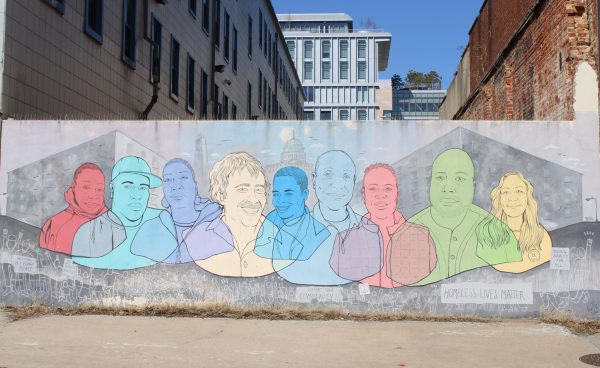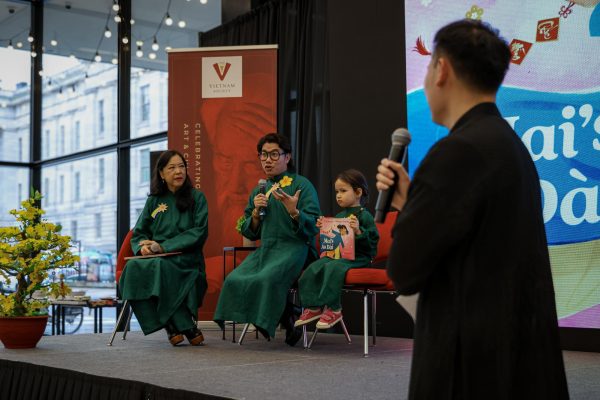Along Class Lines: The Cultural Divide
Coming to AU, I had never traveled out of the Mid-Atlantic, the latest issues of the New Yorker or Harper’s never graced my family’s coffee table, and I thought every working person got paid by the hour. College is supposed to be a time of reinvention, a time when students discover who they are and plot career paths, but for me, and the droves of other AU students from working class backgrounds, it can be a time of social readjustment
I didn’t know what it was like to skip to Europe with my parents, enjoy the company of doctors and lawyers, and I didn’t have the kind of historical and literary inheritance that students with well-read, educated parents had. (This is not to my discount self-education and stellar middle-and secondary-schools, but the kind of intelligence acquired from something like having books around a house and parents who can, at any time, serve as human-encyclopedias helps you intellectually expand in ways which are hard to quantify.)
When I arrived at AU, I didn’t want to reveal to my new friends that I wasn’t well-traveled and lacked urbane mannerisms, so I acted like I was in-the-know, hoping they wouldn’t realize my cultural fluency was a masquerade. To avoid alienation, I tried “culturally passing.” In Border Crossings: Working-Class Encounters In Higher Education, Richard Greenwald and Elizabeth A. Grant describe the experience as: “Feeling elation for having ‘made it’ but, at the same time, despair, for not truly fitting in … Working-class students recognize early on how socially unprepared they are for college.”
Surveying a class of thirty-five students in a freshman seminar, the ethnic diversity is immediately apparent. But the socioeconomic, invisible. Class, through the access to resources and the accumulation of cultural capital, is prevalently articulated at AU, but rarely discussed. For example, food: the way you talk about it, to a certain extent, can illuminate your class background. This seems banal and innocent enough. But how and why you know about food, besides your geography, is a question that interrogates underlying assumptions. Little did you know — or maybe you do know — that most food other than the typical American staples are reserved for the haute and privledged. Caille en Sarcophage, anyone?
Students analyze class as a subject of scholarship, but not as many consider it a human reality; they’ll rush to enroll in sociology and cultural anthropology courses, yet most take more time memorizing the areas of intersectionality than they do trying to understand working class folks.
Confronting uncomfortable realities, like not being able to pay for dinner when out with friends and having parents who don’t know what the LSATs or MCATs are, let alone give advice about them, is part of the working class divide. And since the difference isn’t always visible, it isn’t difficult for students to pass — but it is ultimately insincere and self-destructive.
For working class students, the hurdles are high from the start.
College tuition fees have risen 375% since 1980, and cuts in state funding for higher education are rampant. Pell Grants, based entirely on financial need and a way schools try to accommodate students from lower-income backgrounds, have been frozen at $4,050 since 2003. That’s the maximum yearly award. This year, as a part of President Obama’s American Recovery and Reinvestment Act, the annual award increased by $600, the equivalent to, in many cases, the tab for a semester’s bookload. So just making it to a college campus is a daunting and often financially insurmountable task for many working class families. Community colleges and state universities have given students without trust funds and disposable parental checkbooks a chance to pursue the American Dream of higher education. But culture trumps economics. As Greenwald and Grant suggest: “[The] working class has jobs, not careers — their work is not geared toward social mobility. [They are] paid wages, not salaries.”
It’s not that the working class lack motivation or the capacity to engage in rigorous academic study, but they need to earn money to pay bills and stake financial independence early on. Additionally, there is no social expectation of college attendance in many working class families. In fact, many working class parents encourage their kids to jump into the workforce, as it would add an additional income to the family. But when a working-class student is inspired to enroll, the local community college appears to be the only financially viable option. The retention and graduation rates at many of these institutions, in part due to small coffers, understaffed faculty, and the high levels of commuting students, are dismal. However, when a blue-collar student starts at a competitive institution, worlds collide.
AU should implement a program pioneered at The University of Wisconsin-Madison to address campus-wide cultural dividedness. At Madison, a group of working-class students launched the Working Class Student Union (WCSU) which offers peer-to-peer support spaces for working class, first generation, and non-traditional students. The Union also organizes educational workshops which specialize in training the majority of the studentbody on class issues. Madison’s student government funds the WCSU, and the program is tremendously successful. AU certainly has the student interest and university resources for such a program to flourish. It now is up to students and faculty to vocalize their interest and for Student Activities and SGA to support the effort. An AU Working Class Student Union would address the social realm of the working-class divide head-on. As put by Greenwald and Grant: “If students knew that ‘people just like them’ exist in places like this, we could better serve as role models and mentors for them.”
But it needs to more than rousing discussions among class-aligned students. Making student biographies a part of the classroom so that fellow students can gain insight into the unique, diverse backgrounds of their peers would be useful and instructive. And something as simple as incorporating class difference into curricula that are geared toward analyzing diversity would be another step toward inclusion. This would help AU students of all backgrounds celebrate their class as a part of their interesting and multi-layered identity and not feel forced to “pass” under social pressure.
A version of this essay appeared in the October 11, 2009 issue of The Chronicle of Higher Education.







